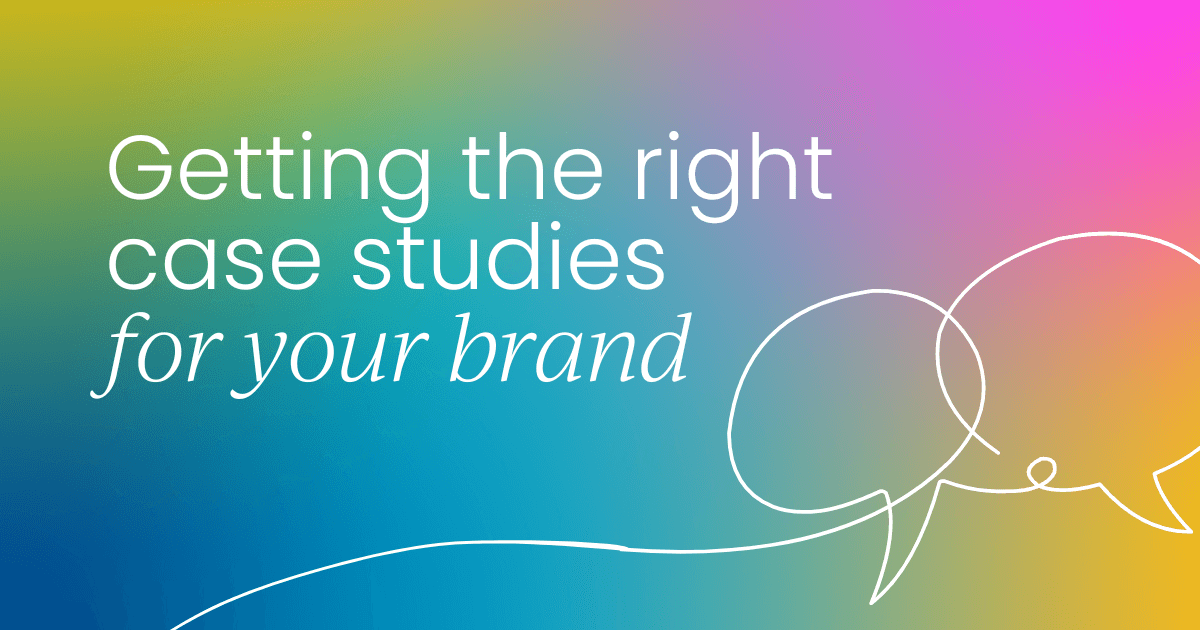As customer marketing matures into a strategic growth driver, case studies have emerged as one of the most effective tools for building trust and proving value both internally and externally.
At Reputation, we’ve learned that a well-crafted customer story is a critical asset that fuels sales enablement, deepens customer relationships, and drives real business impact.
When you pair storytelling with the right data and internal alignment, case studies become one of the most scalable ways to amplify customer voices and showcase outcomes that truly move the needle.

Why customer-first thinking works
I’ve always believed in putting the customer first; it’s been a core principle throughout my entire career.
And I know it might sound cheesy, but I truly believe that customers should be at the heart of any organizational strategy. It’s the most effective way to drive success. When you prioritize your current customers, everything else falls into place.
Customer marketing is such a good fit for me because it lets me live out that belief every day. I love what I do, and I’m hopeful that the work we’re doing will continue to get recognition.
Why case studies matter
Case studies are absolutely critical. They’re your proof that your customers demonstrate the real-world success of your product.
I give a lot of credit to our account executives (AEs). They’re incredible at building relationships and communicating the value of our platform. But nothing builds credibility quite like hearing success stories directly from peers and colleagues in the industry.
When prospective customers see others in their field using the same language and solving the same problems, that relatability makes an immediate impact. I’d say 90% of the time, case studies serve as powerful tools for demand generation and upsell.
But there's also that 10% retention piece where you can spotlight a fantastic customer, celebrate the work they've done, and elevate their story.
When you put a customer in the spotlight, whether through PR or social media, you’re not just showcasing your solution, you’re also boosting their personal and company brand. It’s a win-win. It helps with renewals, deepens the relationship, and creates long-term advocates.
How I identify the right customers for case studies
When I’m building our case study library, I follow three golden rules.
First, your library should reflect your current customer landscape, industry, company size, and product usage. That means showcasing the verticals we serve most, like automotive, healthcare, and property management. And while big enterprise logos are exciting, I make sure mid-market and SMBs are well represented too. Prospects need to see themselves in these stories.
Second, find passionate customers who are excited to talk. Enthusiasm translates directly into richer, more compelling stories.
Third, secure logo and name usage approval before you begin. Nothing is more frustrating than doing all the work and then learning you have to publish the piece anonymously. That early check saves time and protects the integrity of your content.
How we use case studies internally
Internally, case studies are one of our best enablement tools. With so much change and new hires across teams, they help everyone (especially new team members) get into the mindset of our customers. They learn the language, the KPIs, and what matters most in each industry.
We also treat the interview process as a gold mine. When customers start talking, they often reveal product feedback, unexpected wins, and even pain points. I’ve pinged our product team mid-call more than once to loop them into valuable insights we wouldn’t have uncovered otherwise.
How we use case studies externally
Externally, we use case studies everywhere. We create several formats for each story: a landing page for SEO, a downloadable PDF for sales, and a printed version for in-person events.
We also use customer quotes and stats in paid ads as they perform significantly better than branding content alone.
We often turn strong case study participants into speakers. If they’re presenting at an event, we’ll bring printed handouts to the booth to help drive engagement. And we don’t stop there, we create summary slides so CSMs and AEs can quickly reference the story in meetings. They don’t have time to walk through a four-page PDF on a call, but a single, well-designed slide? That’s gold.
Who to collaborate with
Our CSMs are our MVPs. They know the customers best – when it’s the right time, who’s happy, and what story needs to be told.
We always start with an internal interview with the CSM and AE to get context that doesn’t show up in the CRM. We ask about the backstory, key results, and the angle we should focus on.
It’s also our responsibility to say no sometimes. Just being a happy customer doesn’t automatically make someone case study-ready. If we can’t tie their success to real metrics or align them to our strategic content pillars, we’ll suggest alternative advocacy opportunities like testimonials, speaker slots, or reference calls.
We even train our CSMs to collect their own stories – short videos, testimonials, or customer soundbites – so we don’t lose valuable insights just because we don’t have capacity for a full case study.
How to make sure your case studies get used
Creating case studies is only half the battle – distribution is where the impact happens.
We maintain a central Google Sheet matrix, organized by industry and product, with links to each version of every case study. It’s shared widely and consistently. So when someone asks for a specific asset, the answer is, “It’s right here in the matrix.”
We also reinforce it weekly through our “Customer Corner” segment on our field enablement calls. We spotlight a story, call out the AE and CSM involved, and make sure everyone knows how to use that content.
People love the recognition, and the repetition ensures the message sticks – even if someone missed it the first time.
What great case study data looks like
In a perfect world, every case study would include three layers of data.
First, platform-specific metrics – things like our Reputation Score, reviews, star ratings, or social signals.
Second, year-over-year insights pulled by our amazing data science team. If I can get them involved, they’ll build beautiful data stories that speak for themselves.
And third – this is the holy grail – customer KPIs. If a customer is willing to share their own internal business metrics, like occupancy rates, sales lift, or patient satisfaction scores, that’s a level of trust that speaks volumes.
You could write a case study with just four killer stats and a single paragraph if the data is that good.
My favorite use cases for case studies
Honestly, I’m a broken record when it comes to repurposing content. Case studies fuel SEO, digital ads, email nurtures – you name it. We use them across the entire funnel, and we design each case study with multiple formats so it can work everywhere.
One of my favorite use cases is at live events. We print case studies featuring industry peers and recognizable names. When someone walks by the booth and sees a brand they know, it makes an impression and gives them something valuable to take with them.
We also create one-sheeters and summary slides to make it as easy as possible for our teams to use these stories on calls or in decks. It’s all about accessibility and relevance.
How to keep your case studies fresh
We do an annual audit of our case study library to keep things up to date. We check for branding changes, product updates, and we assess whether the data is still relevant.
If a story is showing its age or the customer has churned, we archive it. As much as sales might want to hold onto it, referencing churned customers opens the door to conversations you don’t want to have.
We also avoid adding specific years to our content. Instead, we’ll say something like “over a two-year period” so the story remains evergreen. If the data still holds up, the story can still be useful.
That said, if a customer adds new products or grows with us, we treat that as a chance for a version 2.0 – an updated case study that shows how the relationship has evolved.
And if a particular case study is driving a lot of traffic, but the customer is no longer current, we’ll 301 redirect that URL to a new, similar story. It preserves some SEO value while ensuring the content remains fresh and relevant.
Final thoughts
Case studies are one of the most versatile, high-impact tools in the customer marketer’s toolkit. When done right, they don’t just support marketing and sales – they educate your team, deepen customer relationships, and tell the most important story of all: how your product makes a difference in people’s lives and businesses.
This article was based on Cassie's appearance on the Customer Marketing Catch-up podcast.


 6 min read
6 min read
 Follow us on LinkedIn
Follow us on LinkedIn




